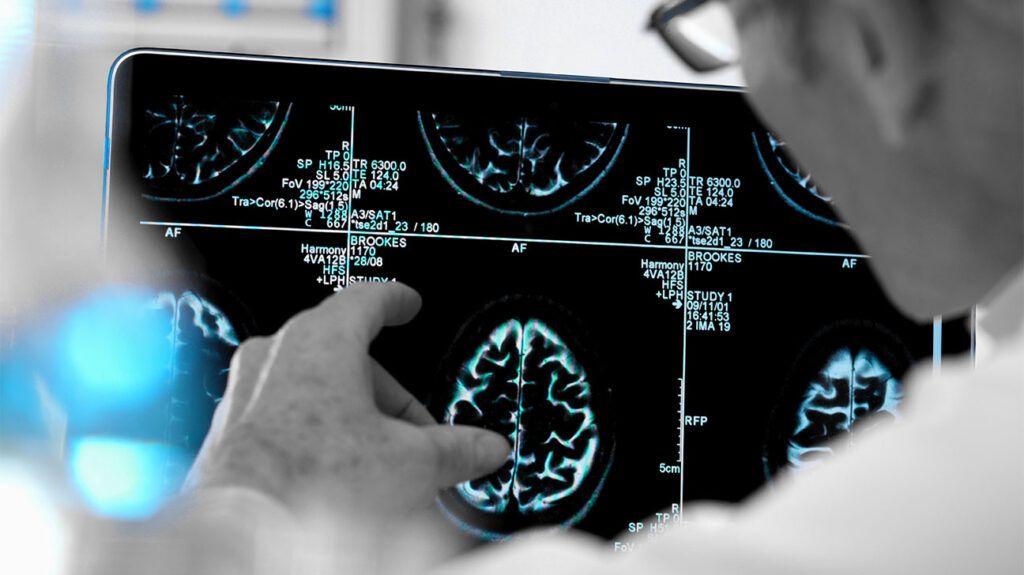Brain stem gliomas are growths that begin in the glial cells of the brain stem. Doctors can diagnose brain stem glioma using neurological exams and scans. Treatment may involve chemotherapy, radiation therapy, or surgery.
This article provides an in-depth look at brain stem glioma, with a definition and review of the main types.
The article also outlines the causes, symptoms, and diagnosis of brain stem glioma. It also examines treatment and outlook.

Brain stem gliomas are gliomas that begin in the brain stem. The brain stem is the part of the brain that makes direct contact with the spinal cord.
Gliomas are tumors that form in the brain and
Research has shown that brain stem glioma is
There are
- astrocytomas, which originate from astrocytes
- oligodendrogliomas, which originate from oligodendrocyte cells
- ependymomas, which originate from ependymal cells
Doctors also categorize gliomas according to their location and patterns of growth.
For instance, the
- Diffuse intrinsic pontine gliomas (DIPG): This is a fast-growing tumor that forms in the pons, which is the upper portion of the brain stem. It can easily spread to healthy cells in the brain stem and affect vital functions, such as breathing and heart rate.
- Focal brain stem glioma: This is a slow-growing tumor that does not form in the pons and does not spread.
Experts are
NF1 is a rare genetic condition that causes tumors to develop on the skin and nerves.
According to a
Brain stem glioma can cause various nonspecific symptoms.
Possible symptoms in children include:
- difficulties with eye movement, such as eyes turning inwards
- vision problems
- morning headaches
- headaches that go away after vomiting
- nausea and vomiting
- being unusually sleepy
- an inability to move one side of the body or face
- a loss of balance
- difficulties walking
- being more or less energetic than usual
- behavioral changes
- difficulties learning at school
A headache is the
In addition to taking medical history and performing a physical exam, doctors
- Neurological exam: This type of exam assesses a person’s brain and nervous system function, including mental status, coordination, and reflexes.
- MRI with gadolinium: An MRI scan allows doctors to produce accurate images of someone’s brain. Gadolinium is an injectable substance that provides contrast between the brain tumor and typical tissue.
Doctors treat brain stem gliomas in several different ways.
Childhood diffuse intrinsic brain stem glioma
According to the
- External radiation therapy: This treatment involves using a machine to send beams of radiation toward the glioma, limiting its development.
- Chemotherapy: The approach involves administering cancer-killing drugs.
Childhood focal brain stem glioma
Additionally, there is no cure for childhood focal brain stem glioma. However, the following treatments may help with symptom relief:
- Surgery: Surgery to remove the glioma may be an option in some cases. Doctors may also recommend chemotherapy and radiation therapy before surgery.
- Internal radiation therapy: This therapy involves implanting tiny radioactive seeds near the glioma. The radiation from those seeds may help kill cancer cells.
For slow-growing gliomas, doctors may recommend a wait-and-see approach.
Adulthood brain stem glioma
Radiation therapy and chemotherapy
According to a
The study also notes that having a glioma less than 3 centimeters in size may improve the outlook for this condition. Surgery may also improve a person’s outlook. However, the study did not find similar positive effects for radiotherapy or chemotherapy.
The above
Brain stem gliomas begin in the glial cells of the brain stem. Glial cells act to support neurons, and they are not always cancerous.
Brain stem gliomas are most common in children.
In adults and children, gliomas can cause headaches. Children may also experience a range of other symptoms.
There is no known cure for brain stem glioma. However, depending on the type of glioma, treatments, such as radiation therapy, chemotherapy, and surgery, may prolong a person’s life and provide symptom relief.
